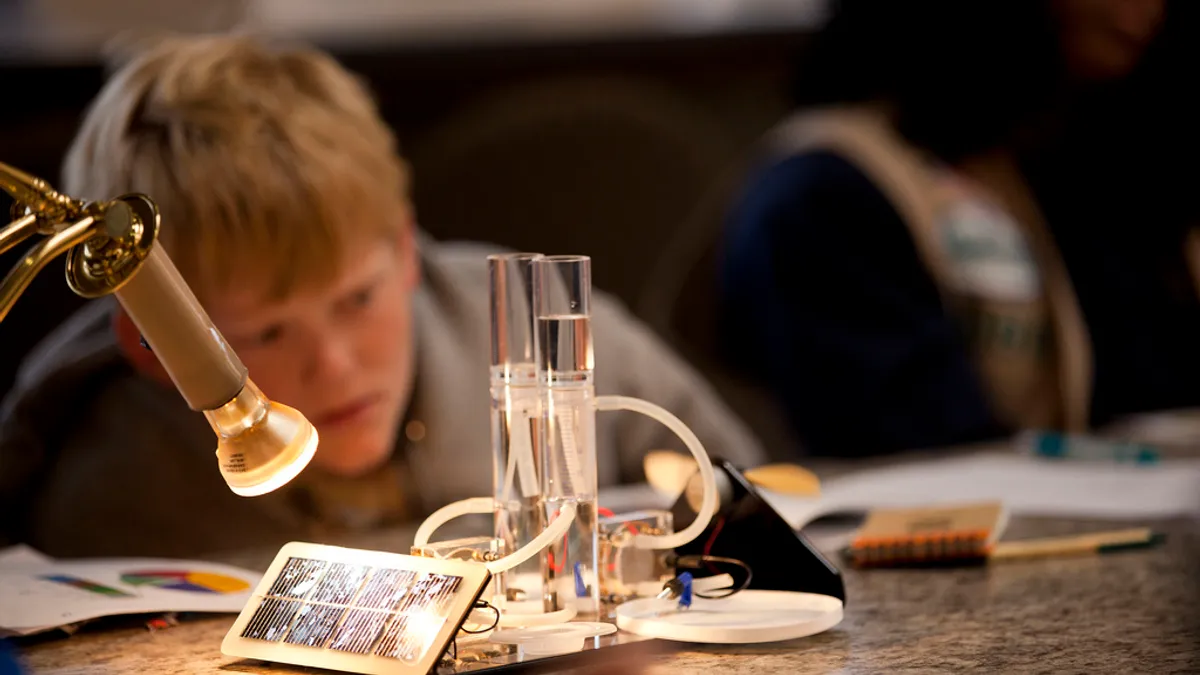Dive Brief:
- From the study of life cycles of plants in Pre-K to the invention of technologies at the high school level, the Little Falls City School District in New York is using a standards-based Engineering by Design program created to help students develop real-life problem-solving skills in grade-appropriate projects ranging, District Administration reports.
- Since it was introduced in 2012, five to 10 school districts in New York have joined the program, which is part of the part of the International Technology and Engineering Educators Association’s STEM±Center.
- Roughly 150 teachers from 70 New York school districts have engaged in the four-day professional development sessions which are part of the Engineering By Design curriculum and have learned to integrate technical literacy through problem-based learning as a result.
Dive Insight:
With the growth of new technological and scientific demands in the workplace, a focus on STEM education is becoming a priority for school districts across the nation. For some schools, this may simply mean adding a science fair or exhibits at the elementary level and adding a course or two at the high school level. However, some school districts are seeing the wisdom of a more embedded approach and providing a conceptual framework for integrated STEM education across multiple grade levels and disciplines.
The Engineering by Design program used in New York helps offer a consistent framework across the districts and allows these schools to share a common language and approach that can only benefit them in the end. The program also uses the concept of problem-based or project-based learning which helps engage the students as they look at selected problems and seek solutions either alone or as a collaborative effort.
Another way schools are seeking to engage students in STEM or STEAM projects is through the growing use of makerspaces, which can be set up relatively inexpensively in classrooms or school media centers. Makerspaces can help students find creative solutions to set problems, an approach that will not only help them see the value of what they are learning, but which also can be applied to job situations in the future.






 Dive Awards
Dive Awards




